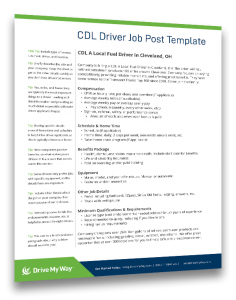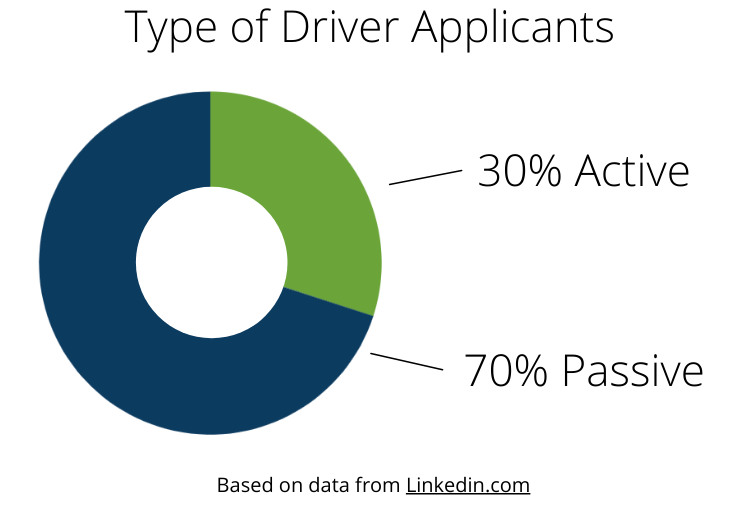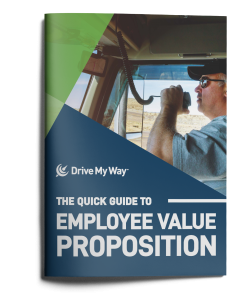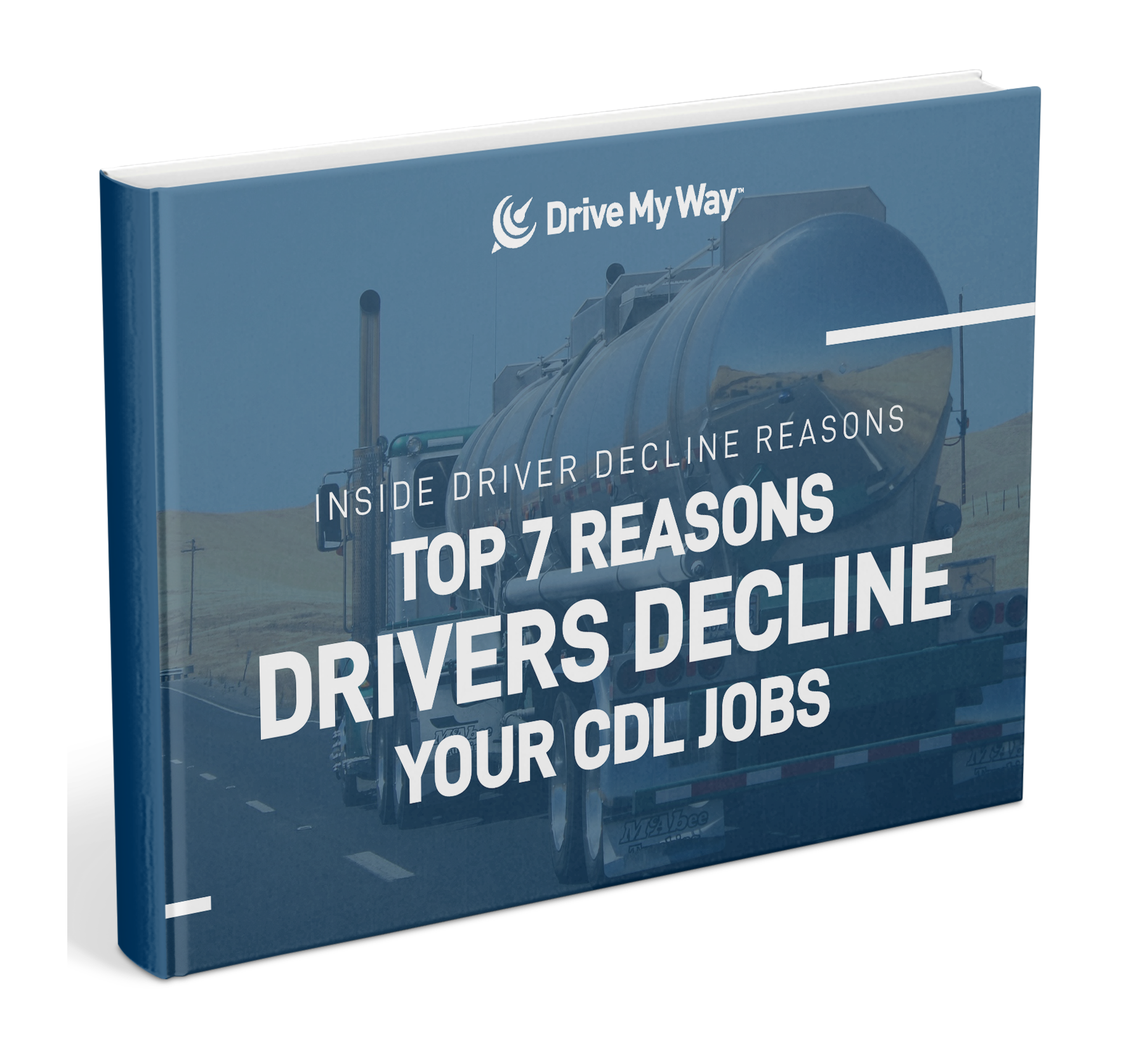
Trucking recruiters are tasked with finding top candidates, matching them to the right jobs, and converting them into drivers for the fleet. That’s why it can become so frustrating when you notice that the number of drivers who apply for your jobs starts to drop.
There could be many reasons why this is happening, but if you’ve got a solid reputation, great pay, and nice benefits and home time, the real reason could be right under your nose; application abandonment.
Your carrier could have the best reputation, pay, benefits, and perks in the industry, but it amounts to little if you have an application process that is so frustrating for a driver to get through that they don’t even bother finishing it.
A recent survey found that 92% of jobseekers who hit “apply”, never actually get through the entire job application. Just think about the great drivers your carrier could be missing out on because of a bad application process. Here are three things that could be causing truck driver application abandonment and what you can do to fix them.
1. Cut Down on the Length
 If you’re dealing with high application abandonment, try putting yourself in a driver’s shoes. Most drivers don’t want to spend their limited free time filling out lengthy and complex applications. In fact, this is usually the top reason job seekers quit in the middle of applications.
If you’re dealing with high application abandonment, try putting yourself in a driver’s shoes. Most drivers don’t want to spend their limited free time filling out lengthy and complex applications. In fact, this is usually the top reason job seekers quit in the middle of applications.
If your applications require drivers to answer multiple long form answers, input the same information multiple times, or they’re being asked tedious questions related to small details of the job, most will decide it’s not worth it and move on. Worst case, you may be losing these candidates to rival carriers who have optimized and shortened their applications.
Ideally, your carrier’s application should take no longer than 15 minutes to complete. Instead of requiring drivers to provide every bit of information up-front during the application, focus on the basics and stick to questions that require simple answers. You can ask more detailed questions later, during the follow-up or in-person phone call.
2. Make Applications Mobile-Friendly
 Since drivers spend most of their time on the road, they mainly search for and apply to jobs using their smartphones. In this mobile-first world, recruiters and fleet managers need to make sure they’re able to communicate and interface with drivers this way. Otherwise, you risk a large number of drivers abandoning your application.
Since drivers spend most of their time on the road, they mainly search for and apply to jobs using their smartphones. In this mobile-first world, recruiters and fleet managers need to make sure they’re able to communicate and interface with drivers this way. Otherwise, you risk a large number of drivers abandoning your application.
Optimize your applications for a mobile-first experience by using mobile rendering, saved login information, and other useful features. A lot of web providers will give you the ability to look at what a page will look like on a mobile device before you publish, so you can see if there are any issues.
3. Collect Feedback
 While you, as a recruiter can create what you think is the most efficient, painless, and all-around great application experience, you won’t really know how it is until drivers start applying. Even when they do start, it can be hard to gauge what’s working and what’s not since gathering data around job application abandonment can prove to be difficult.
While you, as a recruiter can create what you think is the most efficient, painless, and all-around great application experience, you won’t really know how it is until drivers start applying. Even when they do start, it can be hard to gauge what’s working and what’s not since gathering data around job application abandonment can prove to be difficult.
The solution lies in collecting driver feedback. Reach out to drivers who have completed your application process and see how they felt about it. You could offer an incentive to do so or tack it on as the last question during your initial phone screens with drivers.
This information is invaluable in helping you and your recruiting team understand what’s working and what’s not in relation to your application.





 It’s not breaking news that print media is on the decline. While ads in newspapers and magazines may have been the primary advertising channel decades ago, readership has gone down significantly.
It’s not breaking news that print media is on the decline. While ads in newspapers and magazines may have been the primary advertising channel decades ago, readership has gone down significantly.  You’ve seen these ads everywhere: Ones with 20-30 bullets listing out every facet and minute detail of a job. But the more information available for prospective hires, the better, right? Think again. In that very early stage of the job search, driver candidates are usually just looking for a few pieces of key information so they can decide if they want to learn more about the position.
You’ve seen these ads everywhere: Ones with 20-30 bullets listing out every facet and minute detail of a job. But the more information available for prospective hires, the better, right? Think again. In that very early stage of the job search, driver candidates are usually just looking for a few pieces of key information so they can decide if they want to learn more about the position.  To simply call social media popular anymore is a gross understatement. It’s become so entwined with people’s lives that we almost can’t imagine life without it. This is why it’s important for carriers who are looking to reach more drivers through their job ads to build up a presence on these social media sites.
To simply call social media popular anymore is a gross understatement. It’s become so entwined with people’s lives that we almost can’t imagine life without it. This is why it’s important for carriers who are looking to reach more drivers through their job ads to build up a presence on these social media sites.  Where the ad is placed is just as important as how it’s written. With hundreds of job boards and social media channels out there, it can be a pain to know where your time and resources are best spent to reach the drivers you’re looking for.
Where the ad is placed is just as important as how it’s written. With hundreds of job boards and social media channels out there, it can be a pain to know where your time and resources are best spent to reach the drivers you’re looking for.  Comprehensive CDL Recruitment Solutions
Comprehensive CDL Recruitment Solutions




 The number one reason that truck drivers end up declining a job is because they’ve already accepted a different offer that reached them first. This is why quickly moving your candidates through the recruiting pipeline is so important.
The number one reason that truck drivers end up declining a job is because they’ve already accepted a different offer that reached them first. This is why quickly moving your candidates through the recruiting pipeline is so important. Time isn’t the only way to measure efficiency in recruiting. Cost per hire or CPH is an essential metric that measures how
Time isn’t the only way to measure efficiency in recruiting. Cost per hire or CPH is an essential metric that measures how  Gone are the days of putting up some flyers and placing your job ad in the newspaper. Digital is king now, with most interested drivers coming from Google searches,
Gone are the days of putting up some flyers and placing your job ad in the newspaper. Digital is king now, with most interested drivers coming from Google searches,  The above metrics take into account truck driver recruiting efforts before the job starts. But those aren’t the only ones you should be looking at. Connecting recruiting efforts with the quality of your hires and their first-year job performance can help you see if your recruiting team is going after the right candidates.
The above metrics take into account truck driver recruiting efforts before the job starts. But those aren’t the only ones you should be looking at. Connecting recruiting efforts with the quality of your hires and their first-year job performance can help you see if your recruiting team is going after the right candidates.  Measuring driver satisfaction is one of the secrets to measuring recruiting success and maximizing driver retention. Drivers and fleets are both looking for a strong match. If drivers aren’t happy with their carrier, it’s only a matter of time before they start looking elsewhere. Given the current state of the trucking industry, your fleet can’t afford to lose a driver after already spending resources on hiring and onboarding.
Measuring driver satisfaction is one of the secrets to measuring recruiting success and maximizing driver retention. Drivers and fleets are both looking for a strong match. If drivers aren’t happy with their carrier, it’s only a matter of time before they start looking elsewhere. Given the current state of the trucking industry, your fleet can’t afford to lose a driver after already spending resources on hiring and onboarding.  When recruiting truck drivers, understanding the difference between active and passive driver applicants can be the difference between a consistent candidate pipeline and struggling to fill your fleet. Active driver applicants are ready to make a job change immediately. In contrast, passive driver applicants should be nurtured over time. An effective recruitment strategy should connect appropriately with active and passive driver applicants to allow you to nimbly shift recruitment strategies as company and drivers’ needs change.
When recruiting truck drivers, understanding the difference between active and passive driver applicants can be the difference between a consistent candidate pipeline and struggling to fill your fleet. Active driver applicants are ready to make a job change immediately. In contrast, passive driver applicants should be nurtured over time. An effective recruitment strategy should connect appropriately with active and passive driver applicants to allow you to nimbly shift recruitment strategies as company and drivers’ needs change.







 The leads you are generating are more than potential hires. They are also reflections of your recruiting message. Make a point to understand the basic profile of your applicants. Then, examine which drivers are moving furthest through your recruitment funnel. Do they fit the persona of a driver who is a good fit for your company? If so, that’s confirmation that your messaging is resonating with the right people. If not, it may be a good opportunity to refine your content.
The leads you are generating are more than potential hires. They are also reflections of your recruiting message. Make a point to understand the basic profile of your applicants. Then, examine which drivers are moving furthest through your recruitment funnel. Do they fit the persona of a driver who is a good fit for your company? If so, that’s confirmation that your messaging is resonating with the right people. If not, it may be a good opportunity to refine your content.  To make the most of your valuable driver leads, set appropriate hiring targets. If possible, use historic data from the past 1-2 years on the hiring trends for your company.
To make the most of your valuable driver leads, set appropriate hiring targets. If possible, use historic data from the past 1-2 years on the hiring trends for your company. 



 What are your lead contacting best practices? How quickly are they being contacted? Once a lead comes in,
What are your lead contacting best practices? How quickly are they being contacted? Once a lead comes in, 
